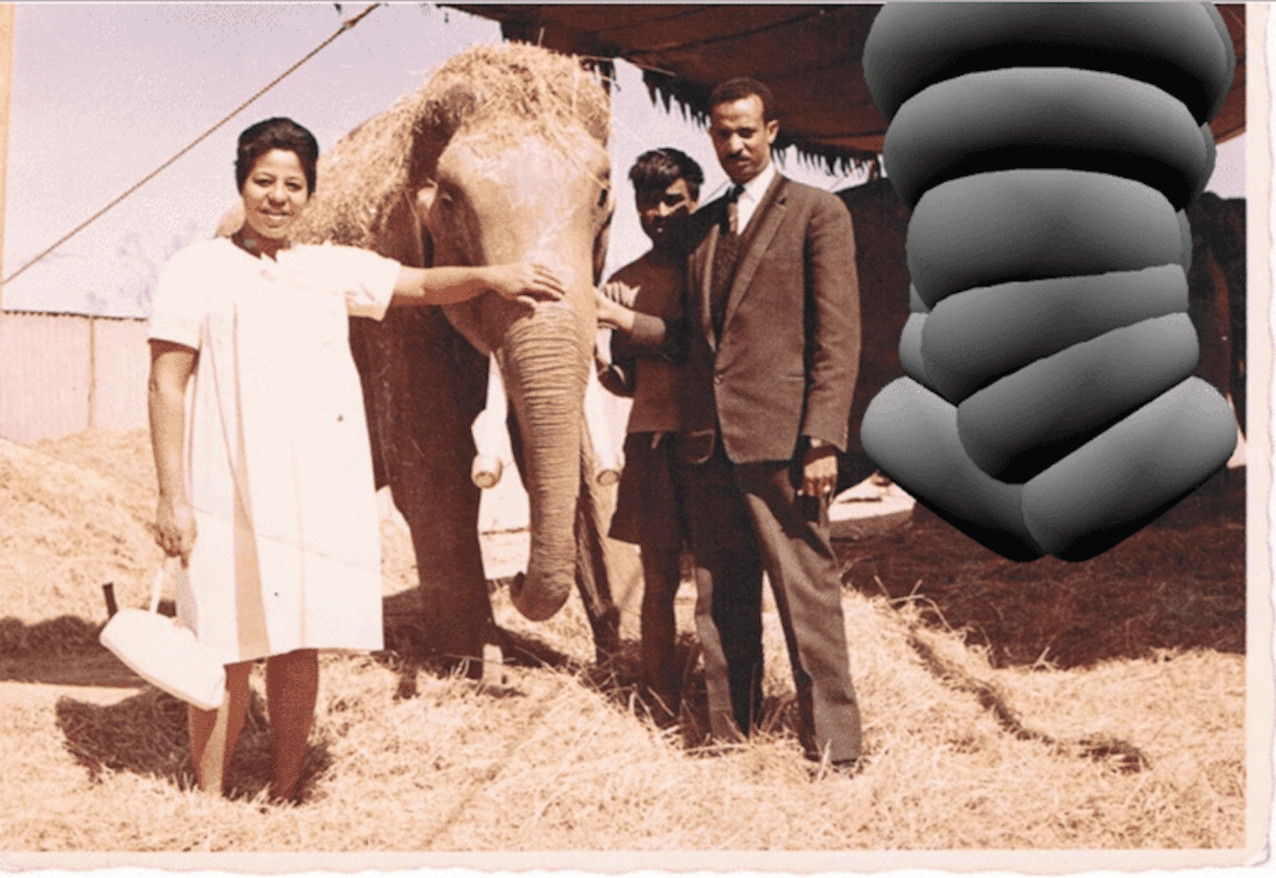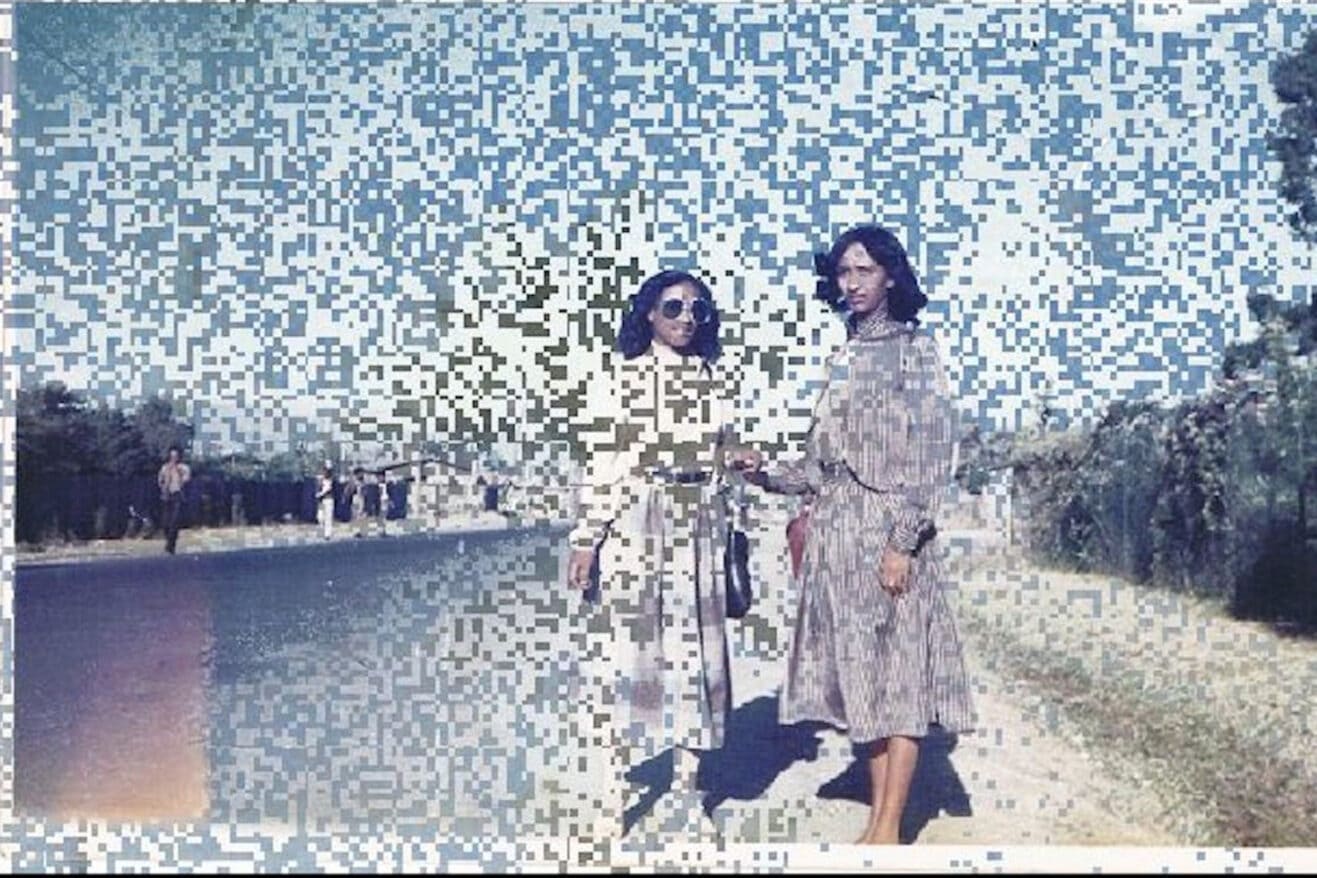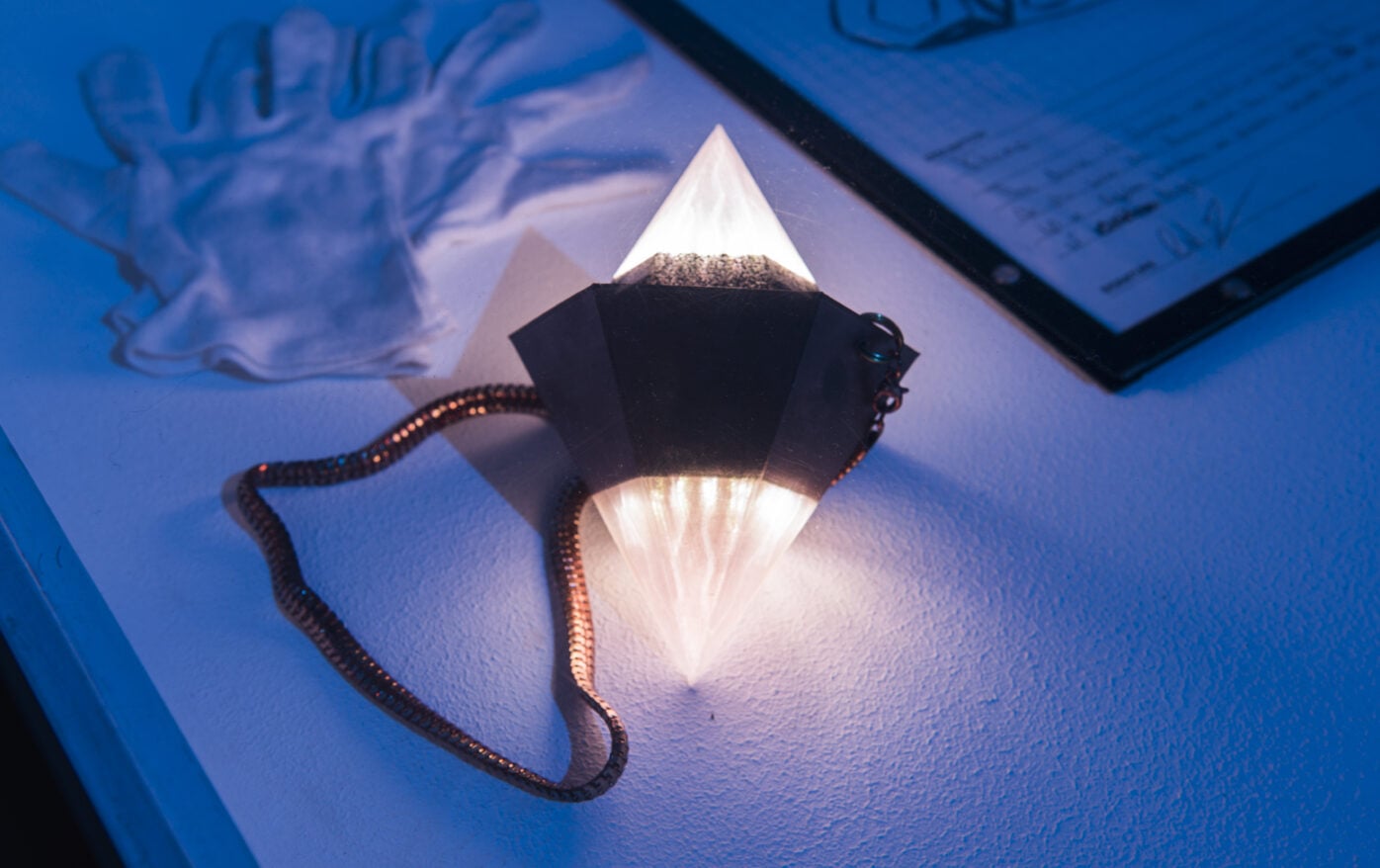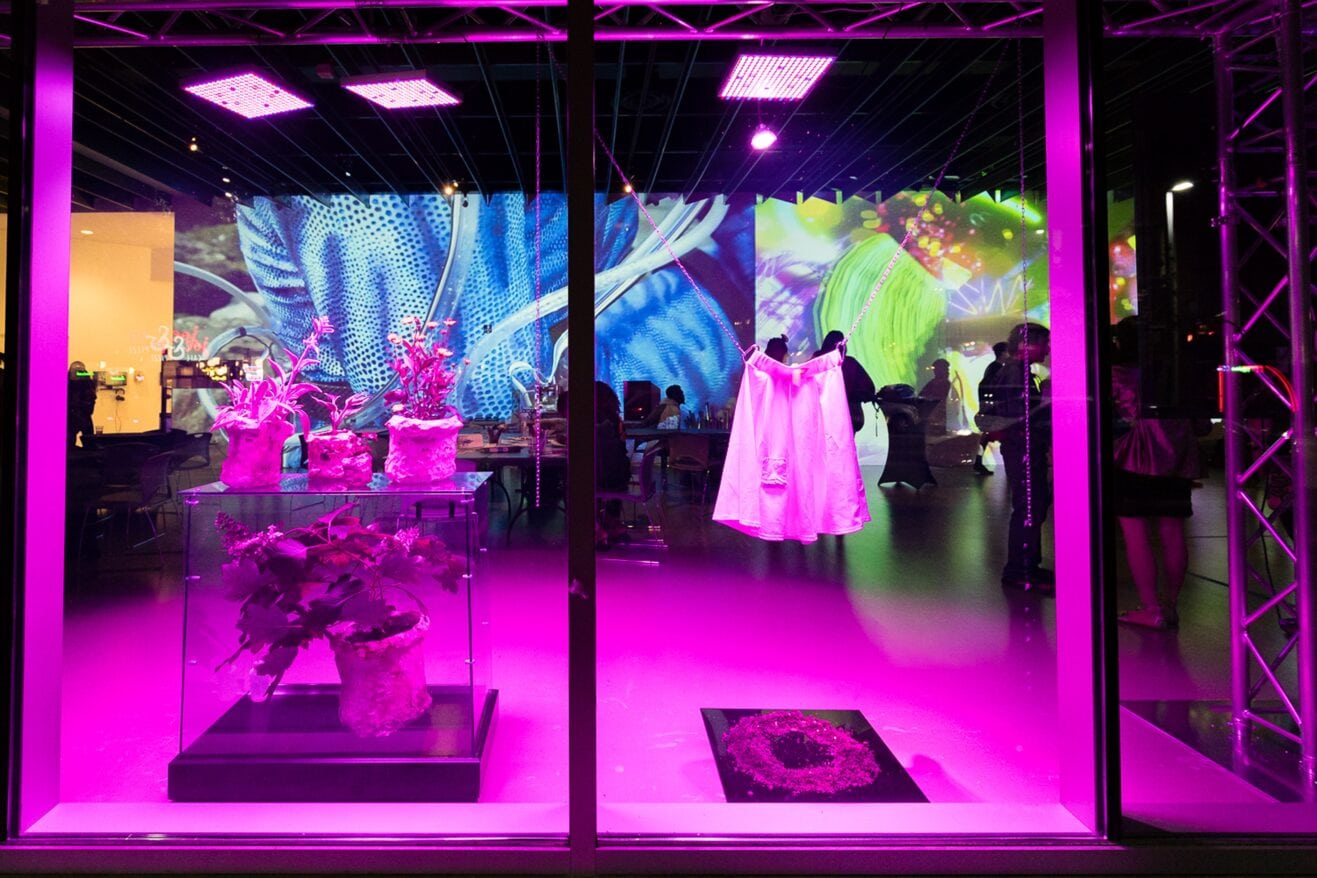A conversation excerpted from Where Is Africa, Vol. I — a collection of interviews with artists engaged in representing Africa across geographical spaces — just published by the Center for Art, Research, and Alliances (CARA) in New York City. CARA is launching the volume with a weekend of conversation and creation, including the Afrophon’ Reading Room curated by Gee Wesley and featuring recent artists’ books and independent publications from Africa, and a workshop on African artists’ manifestos led by Amandine Nana. For more information and to register (events space is limited), visit CARA’s webpage.
Emanuel Admassu: You’re first generation African American.
Salome Asega: Yes.
Admassu: Born and raised in Las Vegas, to Ethiopian immigrants. Is there an attempt to resolve the friction or overlap between these conflicting layers of influence and sensibility? It was interesting to listen to your Hyperopia interview, actively questioning specific labels that people try to impose on your work and your identity. One of the terms that came up was the notion of a translator — maybe because you have always been actively translating between multiple identities?
Asega: I like to think of my practice as an active practice in translation, reinterpretation, and negotiation with collaborators. I try not to center myself in the work, and instead collaborate with other artists to learn all the ways we exist in multiplicity. I think of my practice as storytelling that honors legacy, community, and my traditions.
Admassu: So, it’s been productive to think of yourself as a translator?
Asega: Yes, although there is a power dynamic I want to acknowledge in the term “translator.” When I make work it’s very much situated in a diaspora identity. I’m making work that can’t be distinctly “tagged” to place defined by borders. It’s just of the diaspora, as a global player, as someone who moves between nodes. But also, when I make work, I ask myself, Can my Ethiopian mom understand this?
Admassu: Absolutely.
Asega: And that’s always a filter when I produce something. Is this legible to her? Would this resonate with her? So much of how I learned about a “Black experience” happened in school learning history, which started with the transatlantic experience. And so, I’m caught in-between. Ethiopian representation in the US is also very limited in scope.
Admassu: In your on the line series, you make postcards from digital, archival images and then send them to your grandmother. Can you talk about the functional aspects of the digital versus archival in your artistic practice? And the idea of a multitemporal collapse as a visual strategy?
Asega: We are living in an increasingly tech-enabled world, and our arts and archiving institutions, specifically those that focus on African diasporic culture, need to build a digital brawn to ensure we will see ourselves in the future. So, as we move into a more technological and digital space, I’m coming at it with this rigor of ensuring the things I care about will be on record. on the line was just a silly thing I started doing when I was having Skype issues with my grandmother. Our calls were never fruitful; her access to internet is limited. So I decided to try the mail.

The first time I went to Addis, I found a bag of photographs underneath my mom’s old bed. I don’t think anyone had known that those photographs were there, so I started going through them and realized my grandfather kept meticulous notes on the back of all these photographs. They had dates and the names of the people who were in the images. This is an archiving practice, and it was just in a bag under a bed. I scanned them and sent disks to all my family members of all the images. They were seeing themselves again. They were OK with just having them as memories, but now they also have physical, or I guess digital, references to our family history. Then I started taking it a step further, manipulating the images in Photoshop, or running them through simple algorithms and then printing them as postcards.
I started communicating with my grandmother that way because the Skype drop call situation was not cute. I was sending her these postcards, but I think only one has ever made it to her, because of, I don’t know, infrastructure. Our two countries’ systems for sending and receiving mail are very different, but equally frustrating. But part of what I still love about that project is that the postcard has been touched by so many people. So even if it doesn’t get to her, I like the idea that images of my family, of Ethiopian people in the 1960s and 1970s in suits, looking fly, dancing, drinking wine, have traveled outside of the US. At minimum, it’s joyful, unlike usual images we associate with Ethiopia.
Admassu: You’re taking a physical artifact and disseminating it online and then roping it back and making another physical artifact from that process. Are you actively investigating how your practice goes back and forth between the physical and the digital realm?
Asega: Yeah. The Silicon Valley ethos is that technology is expansive — “we’re reaching more people” — and I’m always trying to figure out how to break that. How do I make tech hyperlocal, like super local? It’s by creating artifacts, creating physical objects that people have to come to or physically share with each other. I’m interested in how tech can call, or ask, or require someone to meet in person.

Admassu: But it also seems like you’re interested in the mistranslations: the fact that this postcard didn’t make it to your grandmother, but it is potentially sitting in someone else’s living room somewhere in Ethiopia.
Asega: It’s strangely beautiful that my glitched, pixelated image of my grandfather is somewhere in the world, with a love note to my grandmother. It could easily be found, which is also a funny thing. If it has landed in someone else’s home, all it takes is a Facebook search, you know, to be like: “Yo, I have your postcard.” It’s just funny that mail and radio are still these things that have transmissions, but the receiving part is difficult. Things go out, but you never really know if they have been received.
Admassu: We could potentially relate this to the goals of Iyapo Repository, in which participants become archivists of a future history they envision. And the ambition is to collect African technological artifacts. In doing so you are facilitating a transformation: an individual who was walking down the sidewalk, all of a sudden, becomes the producer of an archive. And this seems to be a common thread across your practice. How does the conflation of different temporalities affect the circulation of images and artifacts?
Asega: This project is thinking collectively about a past and coming up with a collective narrative. Documenting the present and designing a future together is something our diaspora does very well. We’re able to time-hop simultaneously, we’re able to be in both the present and the future at the same time, i.e. Drexciya or Betty Davis. Iyapo Repository provides some tools and design strategies to ask: What do you want to see for your future? And I’ve learned that in our workshops, we’re not exactly designing concrete plans for a future — maybe in terms of aesthetics and style — but for the most part, I’m hearing about a past that hasn’t been recorded and a present issue.
When we started the project in 2014, a majority of the sketches and artifact ideas that were coming out of our workshops were about police brutality or unjust policing in the US. In 2015, a lot of the things coming out of our workshops were around clean food, access to clean water. It’s the same year we started seeing things in South Dakota and specific land rights issues; we were also seeing more Flint media reporting in 2015. In 2016 there was anxiety about documentation, a lot of anxiety around voting and representation. And, you know, these are futurist design thinking workshops…

Admassu: But what they’re really documenting is the present.
Asega: The present!
Admassu: It’s also interesting that these ideas from the Repository serve as points of departure for pieces that were further developed by you and your collaborator, Ayo [Ayodamola Okunseinde]. You mentioned in your presentation that the work is not necessarily futurist, but quite simply a design thinking workshop. Is it safe to say that you are interested in giving value to ideas and sketches that would often be discarded by cultural gatekeepers?
Asega: Absolutely. I think design as a practice seems to require a certain type of literacy that claims, if you don’t have the education or professional experience, you’re not a designer. But we design every day. Everyone does that sort of thinking and you don’t need institutional paper to recognize that type of work, that type of labor. So we just wanted to design things collectively.
Admassu: You’re expanding what it means to be a designer?
Asega: Yeah. Because I think we do that all the time, like, did your mom or grandmother save bags after grocery shopping to use as trash bags?
Admassu: Yeah.
Asega: That’s a system, she designed a system that’s centered on sustainability, I want these tiny practices that we do every day to survive and be recognized as design. The other thing is, as a Black person who works with technology, the minute I touch a computer I’m an Afrofuturist.
Admassu: Ha!
Asega: It doesn’t have to be all that; it should be very contemporary for me to be working in this way. I want to see more Black folks acknowledged for using emerging technologies; my work through the Iyapo Repository allows me to do that. We have a fun futurist narrative, but my goal is to leverage the access I have to these resources and spaces so that our workshop participants become familiar and have a say in how the technologies develop.
Admassu: In the same vein, Iyapo Repository explores the tension between the historical and the futuristic, the real and the imagined. Can you talk about science fiction as a methodology for understanding Black subjectivity? Diasporic experiences? African experiences?

Asega: I think the science fiction narrative just allowed us a lightness, a playfulness for people to explore. This is something I learned when I was doing a residency at Recess, which was in partnership with Brooklyn Justice Initiatives. We were working with a group of young people who were entering an arts diversion program. So for small crimes they committed, instead of going to Rikers or going into the system, they were put in this arts diversion program where we worked with them to develop artifacts. Their record was cleared if they completed the program. And so we were hosting design thinking workshops with them.
Someone very explicitly said, “Yo man, I don’t have space to think about the future, imagination is a privilege.” And he said it so clearly that I was like, you’re right, having space and time to think about tomorrow is a privilege because a lot of folks are just trying to get through today, get through the next hour. The science fiction narrative is a playful landscape for us to sit in and carve out space and time. This enabled us to bring in whatever we all were carrying with us that day and make it generative.
Admassu: Similarly, your VR work also relies on notions of spatial indeterminacy. Do you think that the dislocation of the body reflects historical conditions of displacement for people of the diaspora?
Asega: That’s interesting. I think that’s a really beautiful interaction to design for — to think about the dislocation of our bodies, and separation from our families and communities. But I’ve been making VR work around spirit possession and thinking about the ways the experience of entering a new realm has been described thoroughly in West African and Caribbean spiritual traditions. And so, when you look at statues from like Santería or Candomblé, you see practitioner figures holding something over their heads. They’re holding a deity, an Orisha that’s about to mount them and they go into spirit possession and a trance state. They are seeing the world through this deity. I’ve just been interested in the actual imagery of it. It’s a person holding an object above them, about to mount and enter a new dimension. There’s a connection to a virtual! So, I’ve just been doing these research-like exercises where I create VR worlds based on different deities and their signifiers. I made one for Mami Wata where you put on the headset and go into her underwater palace. You see her symbols, her mirror, the gold, the lavish underwater experience. It’s a seductive woman . . .
Admassu: So, you’re researching specific deities?
Asega: Yeah. I’ve shown the work a couple times, but I really do think of it as research. I want that perspective in VR because right now it’s a lot of 3D rendering. So much is centered in aesthetics, it’s very visual . . .
Admassu: But it’s typically very apolitical and ahistorical . . .
Asega: It’s a lot about grabbing your attention. I’m really into the exploration. What happens when you put on the headset and just look around?
Admassu: You use technology in Level Up to understand and archive choreographed movements. In your opinion, what is the relationship between digital media and the representation of bodies acting in space? Even the performative piece you developed for your thesis, especially the performance that took place in the general store, seems to be in line with this vision and interest in really positioning people in their own spaces, in order to produce new performances . . .
Asega: Yeah, I think it’s important to bring tech to where people already are. I really like creating experiences where people are kind of forced to act within a public or show up for each other in public. Creating these moments for people to demonstrate who they are or what they are into. In my pirate radio project Crown Heights Mic, Fahid is someone who had his musical instrument underneath his register. A huge part of what he loves to do was under his register and I’d only known him as a person who runs a general store and cashes you out for socks. That performance was a brief moment where he was able to bring his full self to me because I gave him a radio transmitter, you know? In the same way Level Up was for people who felt like they couldn’t be their full selves in a museum space. You’re not supposed to be loud; you’re not supposed to dance. There’s an understood and sometimes performative distance in which you engage with the work. Here, people were dancing at a museum, trying to win a game. It’s funny, I saved an email from one of the security guards at the New Museum who basically told me he had the best time watching people dance all day. All kinds of people. A little Austrian girl and an older Black woman were in a Harlem Shake battle. That’s the kind of experience I want, where you break the rules of a space a little bit.
Admassu: You also seem to prioritize collaborative efforts over the idea of the individual producer. It seems to relate to your interests in multiplicity and dissensus. Is there a clear genealogy of creative practices that serve as precedents for this approach? And also, how does this relate to contemporary notions of authorship?
Asega: I definitely like to work collaboratively because I don’t have all the answers. I don’t know everything. I like to leave a lot of room for other people to contribute to something I maybe instigated. The methodology I use is participatory action research, and the framework is cooperative. Whenever I have an idea, I work with people who are in that field. For example, with the Level Up project, I didn’t know it was going to be a game. My collaborators Ali Rosa-Salas, Chrybaby Cozie, and I had some conceptual questions. We brought these ideas to other dancers and then we came up with the idea of a game together. I would never come and say, “I want to make a game, can you help me?” I don’t even know if that’s the right interaction for the ideas I have.
I never start with the tech or concept. I have questions, I bring those questions to people, and they add more questions. Or they have answers and I have answers, then we decide together. This is what the process should be. That’s important because I need it to be messy, and I need it to speak to a volume of people. I just want it to be multivocal. I would never want to say I’m doing something for a community or a group of people. I want to say I’m doing it with someone. And it’s hard. When you talk about authorship, I have to navigate that all the time because there’s more value in a singular author or sole artist, partly because I think it’s easier to digest and also because it perpetuates “the genius.” I have to constantly insist on the need to put all these people’s names in credits. Even with the Iyapo Repository, when people submit sketches, we build out a fully functioning thing. But the person’s name needs to be on placards and wall tags because she submitted the idea. I don’t need to be the celebrity artist. That’s not why I’m in it. I’m in it to learn with the people I’m working with.
Admassu: But it also seems like your intervention starts at the level of the credit line. That’s a critical moment where you say, these are the coauthors that are usually left out.
Asega: It’s not easy. I’ve worked with galleries and folks in museums who are like: “Really?” It requires a certain amount of labor from everyone, but I also required a certain level of engagement: Don’t fall off at any point in this process, we’ve got to do this right.
Admassu: But isn’t that frustrating? I’m assuming there are moments when you expect people to give more to the project, but they disengage.
Asega: Yeah, I get frustrated. I’m being really nice right now. When you’re in reflection mode, it’s always great but the process is tough. You’re dealing with people! I’m sure I’m annoying at some points. But I’m into these moments where we butt heads and are forced to have a conversation and make decisions. We have to ask why people are annoyed with doing a certain level of work, or why they are disappearing, not participating. I like having those conversations. The process is a major part of the work for me. But we’re human. We’re not going to get along all the time.
Admassu: In one of your presentations, you suggested that the most radical work in imagining alternate futures is not taking place in the mainstream, but rather, on the margins. What are your thoughts about this idea of producing work in separatist spaces? Is that the most productive way to decenter dominant narratives around contemporary African art, narratives that are being developed by museums and art institutions?
Asega: I go in and out of being in separatist spaces, because I currently work for a major institution. But I really find value in organizing and producing in separatist spaces, because otherwise it’s easy to slip into seeking validation from a mainstream that has never really included you. That’s the type of work I’m just not interested in doing. I find value in the things I make. I value the things my friends make — it’s a community of practice where we show up for each other. When there’s a lot of energy concentrated over here, people in the center begin to notice. Then they come and scoop you, and that’s what I’m seeing happen now. We’ve always been over here working together, now I’m seeing people look over here and scoop us into the main, slowly. So, I just don’t want to put effort in trying to measure my work against something I think it should be. I want to have my own indicators for success that are measured by my community.
Admassu: It’s a micro value system that is specific to that community.
Asega: Yes, a system defined by a community of practice that is amorphously driven by the same motivations.
Admassu: What is the current focus of your practice? Is it Hyperopia? Your art practice? Teaching?
Asega: That’s the Million Dollar Question.
Admassu: That’s why I saved it for last.
Asega: I don’t think I have a central focus, but I have buckets. I really love teaching, so that’s one bucket. An independent studio practice is another, and then, radio. I love conversation. It doesn’t have to necessarily be radio, but I like creating spaces for people to share ideas. So, those are my buckets right now.
Admassu: We didn’t talk about Hyperopia: 20/30 Vision. What was the ambition behind that project, and how has it evolved over time?
Asega: The project was started by me and Carl Chen. We were just talking about how the people around us were on a glow-up. They’ll be shaping a field in the next fifteen or twenty years. We wanted to talk with them about what they were forecasting — as potential leaders in their fields by simply asking: “What do you think your discipline will look like in fifteen years?” Because we both love music, we also decided to find DJs to create mixes inspired by our conversations. We’ve been doing this for a year and a half . . .
Admassu: How frequent is it?
Asega: It should be every other Tuesday, but we’re actually thinking about making it a live show. My peers are taking up more space, and I want them to speak out as people who will be shaping their respective fields. We’ve had people from the public and private sector, from reproductive health to architecture. Folks are moving in their fields. I just want to get them on record now. I will have this beautiful archive, twenty years from now, and I will look back and say, “You are now the director of this human rights organization, remember when you said this?”
Admassu: So, both of you are still involved?
Asega: Yeah. Carl went to the Bay for a bit, but we got him back. Thank God!
Admassu: Cool. Do you have any additional comments about where Africa or the diaspora is, and where you would like it to go?
Asega: I would like to be part of more conversations about where the Arab diaspora and African diaspora intersect. Because of where Ethiopia is situated, historically, there has been a lot of mixing.
Admassu: You’re probably like 30 percent.
Asega: Right. So, I’m interested in learning more about the overlaps and digging into that richness.
